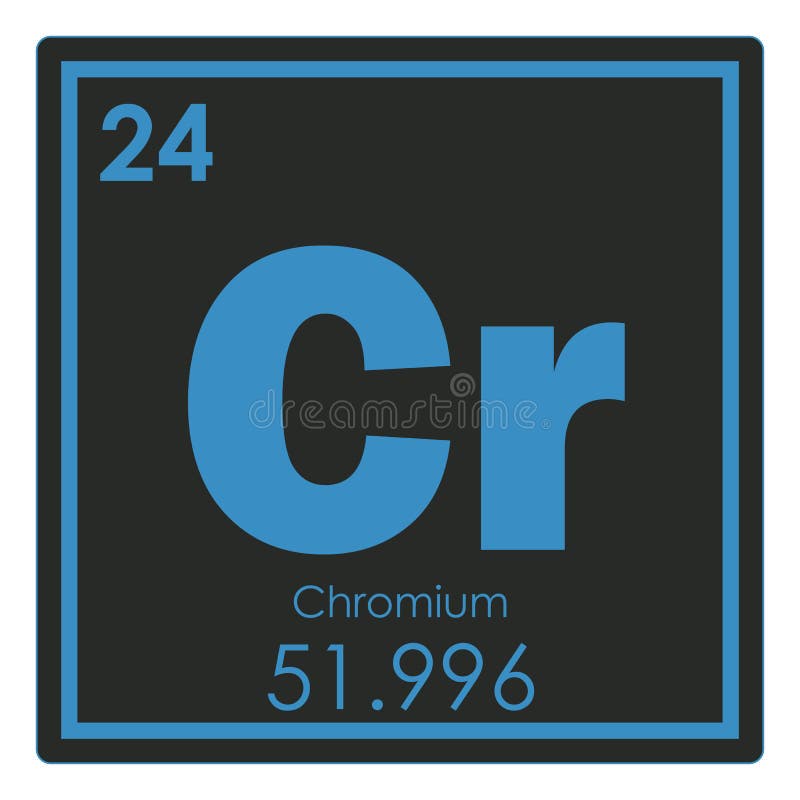

#Chromium atomic number verification
Final and convincing verification came from the Swede Nils Sefström out of an oxide in iron ores in 1831. Not only was it first transported two hundred years ago from Mexico, and lost in a shipwreck along with all of the relevant lab notes by the great German scientist Baron von Humboldt, but it required discovery several times by such famous names as Wöhler, Berzelius and del Rio (who was actually talked out of his claim in 1805). Vanadium, a first row transition metal in the Periodic Table, is an element of mystery. Political stability of top reserve holderĪ percentile rank for the political stability of the country with the largest reserves, derived from World Bank governance indicators. The higher the value, the larger risk there is to supply.Ī percentile rank for the political stability of the top producing country, derived from World Bank governance indicators. The percentage of the world reserves located in the country with the largest reserves. The higher the value, the larger risk there is to supply. The percentage of an element produced in the top producing country. Low = substitution is possible with little or no economic and/or performance impact Medium = substitution is possible but there may be an economic and/or performance impact High = substitution not possible or very difficult. The availability of suitable substitutes for a given commodity. A higher recycling rate may reduce risk to supply. The percentage of a commodity which is recycled. The number of atoms of the element per 1 million atoms of the Earth’s crust. This is calculated by combining the scores for crustal abundance, reserve distribution, production concentration, substitutability, recycling rate and political stability scores. The Chemical Abstracts Service registry number is a unique identifier of a particular chemical, designed to prevent confusion arising from different languages and naming systems.ĭata for this section been provided by the British Geological Survey.Īn integrated supply risk index from 1 (very low risk) to 10 (very high risk). Where more than one isotope exists, the value given is the abundance weighted average.Ītoms of the same element with different numbers of neutrons. This is approximately the sum of the number of protons and neutrons in the nucleus. The mass of an atom relative to that of carbon-12. The transition of a substance directly from the solid to the gas phase without passing through a liquid phase.ĭensity is the mass of a substance that would fill 1 cm 3 at room temperature. The temperature at which the liquid–gas phase change occurs. The temperature at which the solid–liquid phase change occurs. The arrangements of electrons above the last (closed shell) noble gas. These blocks are named for the characteristic spectra they produce: sharp (s), principal (p), diffuse (d), and fundamental (f). The atomic number of each element increases by one, reading from left to right.Įlements are organised into blocks by the orbital type in which the outer electrons are found. Members of a group typically have similar properties and electron configurations in their outer shell.Ī horizontal row in the periodic table.

Chromic acid is used in chromium plating, ceramics, and colored glass.A vertical column in the periodic table. Chromium compounds can also be used as industrial catalysts too. Nichrome, an alloy with nickel and chrome, is used for heating units because of its high heat resistance. Chromite is mainly used as a refractory, because of its heat stability. Chromium is also alloyed with nickel and iron, as well as used as a pigment for glass, paint, glazes. Ferrochromium, a compound with chromium and iron, is mostly used in the production of stainless steel. Uses of ChromiumĬhromium, hard, steel-gray metal with the symbol Cr, is mainly used in stainless steel production. There is a large number of chromium plated parts produced to be used in automobile, construction, and other industries.


The most popular industrial use of chromium is producing mirrors and stainless steel. But in large doses chromium is very toxic. In very small doses, chromium is vital for living organisms as it helps glucose digestion. This chemical element can be mainly found in chromites, and it is used as an element of alloys like the one with steel, to produce very strong metal. It has got its name after the Greek word ‘chroma’ which means color. Chromium is a metal of a silvery-blue color and quite toxic.


 0 kommentar(er)
0 kommentar(er)
